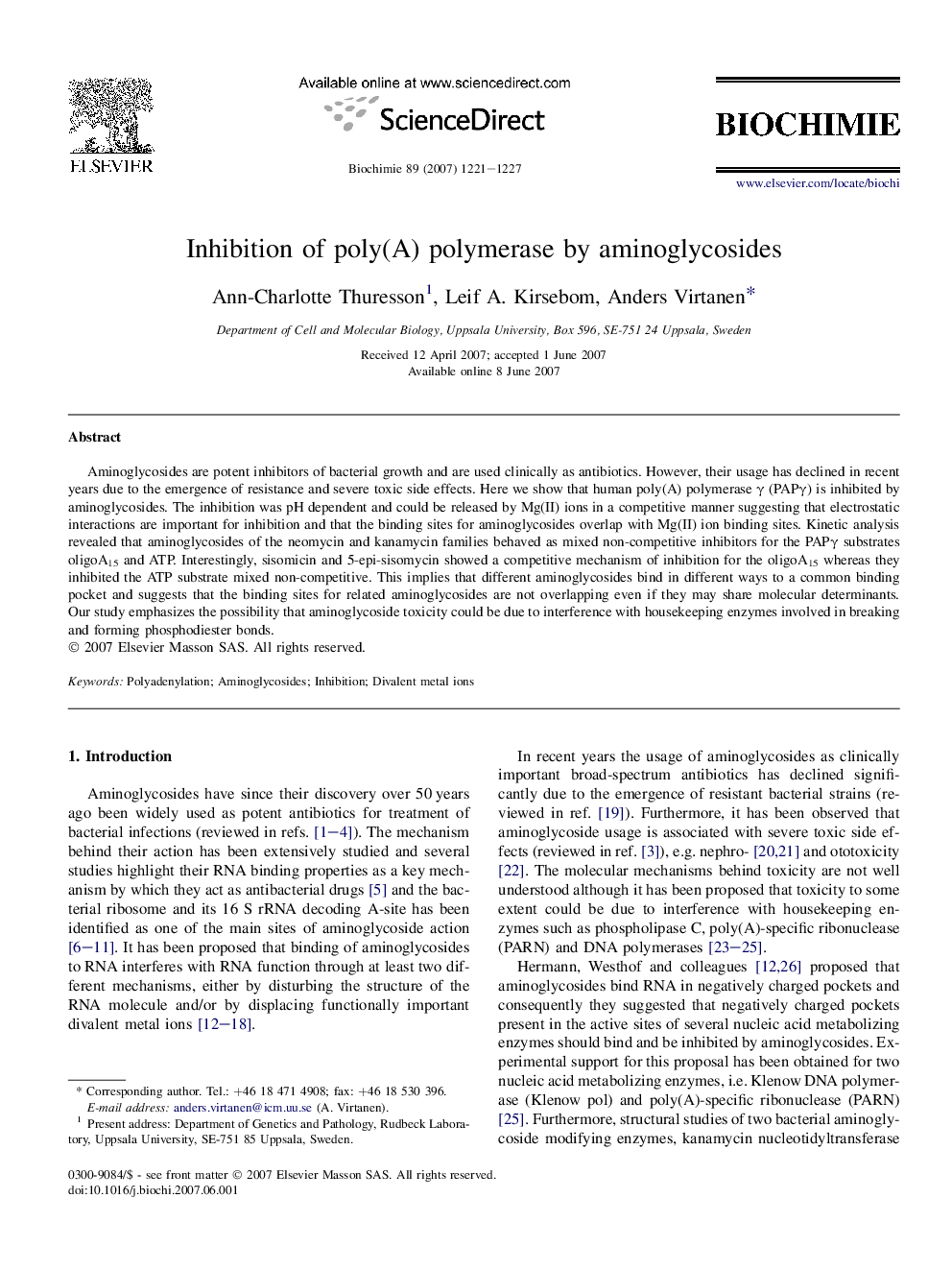| Article ID | Journal | Published Year | Pages | File Type |
|---|---|---|---|---|
| 1953039 | Biochimie | 2007 | 7 Pages |
Abstract
Aminoglycosides are potent inhibitors of bacterial growth and are used clinically as antibiotics. However, their usage has declined in recent years due to the emergence of resistance and severe toxic side effects. Here we show that human poly(A) polymerase γ (PAPγ) is inhibited by aminoglycosides. The inhibition was pH dependent and could be released by Mg(II) ions in a competitive manner suggesting that electrostatic interactions are important for inhibition and that the binding sites for aminoglycosides overlap with Mg(II) ion binding sites. Kinetic analysis revealed that aminoglycosides of the neomycin and kanamycin families behaved as mixed non-competitive inhibitors for the PAPγ substrates oligoA15 and ATP. Interestingly, sisomicin and 5-epi-sisomycin showed a competitive mechanism of inhibition for the oligoA15 whereas they inhibited the ATP substrate mixed non-competitive. This implies that different aminoglycosides bind in different ways to a common binding pocket and suggests that the binding sites for related aminoglycosides are not overlapping even if they may share molecular determinants. Our study emphasizes the possibility that aminoglycoside toxicity could be due to interference with housekeeping enzymes involved in breaking and forming phosphodiester bonds.
Related Topics
Life Sciences
Biochemistry, Genetics and Molecular Biology
Biochemistry
Authors
Ann-Charlotte Thuresson, Leif A. Kirsebom, Anders Virtanen,
